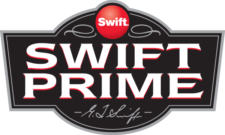Pilgrim’s Moy Park
Reducing Food Waste
In September 2017, Pilgrim’s Moy Park committed to reducing food waste in their operations by 50 percent by 2030. In line with both ‘Courtauld 2025’ and the Champions 12.3 group and in accordance with UN Sustainable Development Goal 12.3. Over the last year, through a number of focused projects, the team has reduced more than 1,000 tonnes of food waste. Since 2015, Moy Park donated more than 100 tonnes of food to those in need, enough for over 250,000 meals, through our charity partners, FareShare, in the U.K.
A highlight of the food waste reduction commitment is the increased focus on innovation through packaging. In 2018, Pilgrim’s Moy Park launched a new smarter re-sealable film packaging solution that improves shelf-life and tackles food waste in the home. The solution is easier for the consumer to open at home or on the go and then reseals for enhanced convenience.
Since the launch of Pilgrim’s Moy Park food waste reduction target, the team has:
- Invested in new equipment, resulting in approximately 1,172 tonnes of Tesco cooked chicken saved that was going to waste annually – the equivalent of 750,000 chickens
- Benchmarked food waste at 15,686 tonnes (approximately 2 percent of Pilgrim’s Moy Park production)
- Benchmarked food waste content – the majority of which (53 percent or 8,376 tonnes) is made up of chicken products that are unsuitable for human consumption (Category 3 Waste), and the remainder (sludge) is made up of production residues (semi-solid material that is produced as a by-product during treatment of wastewater)
- Discovered that more than 64 percent of Pilgrim’s Moy Park food waste is sent to anaerobic digestion, which generates in excess of 26 GWh of renewable electricity. This is equivalent to almost 10 percent of the annual electricity used across the company’s U.K. facilities. The remainder is disposed of in a responsible manner via land application and composting. The environmental benefits of these include soil conditioning and fertilizing (improving the soil’s physical qualities and ability to provide nutrition for plants).






